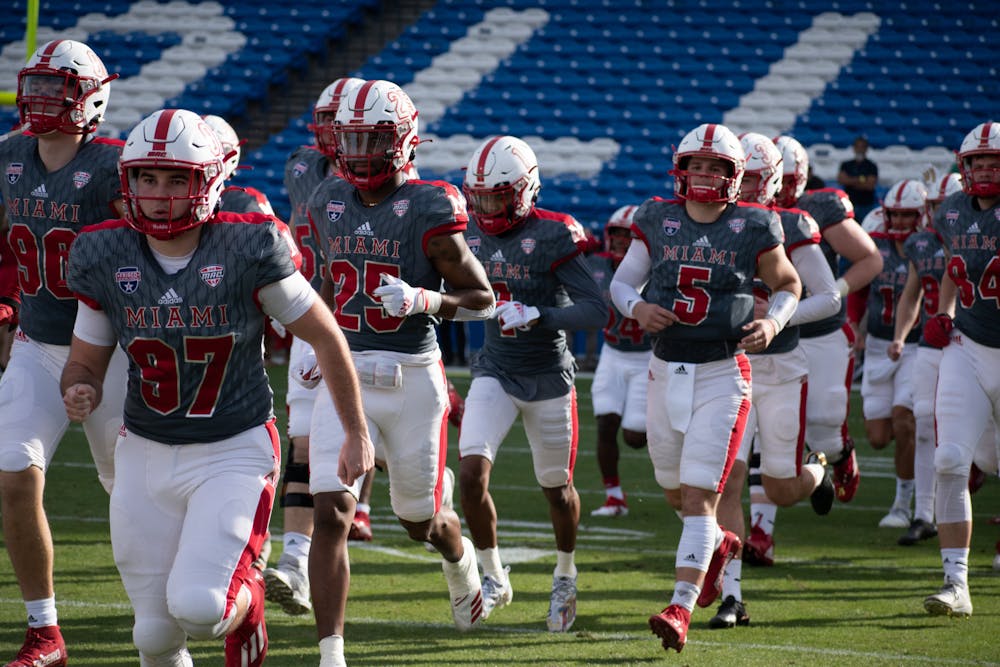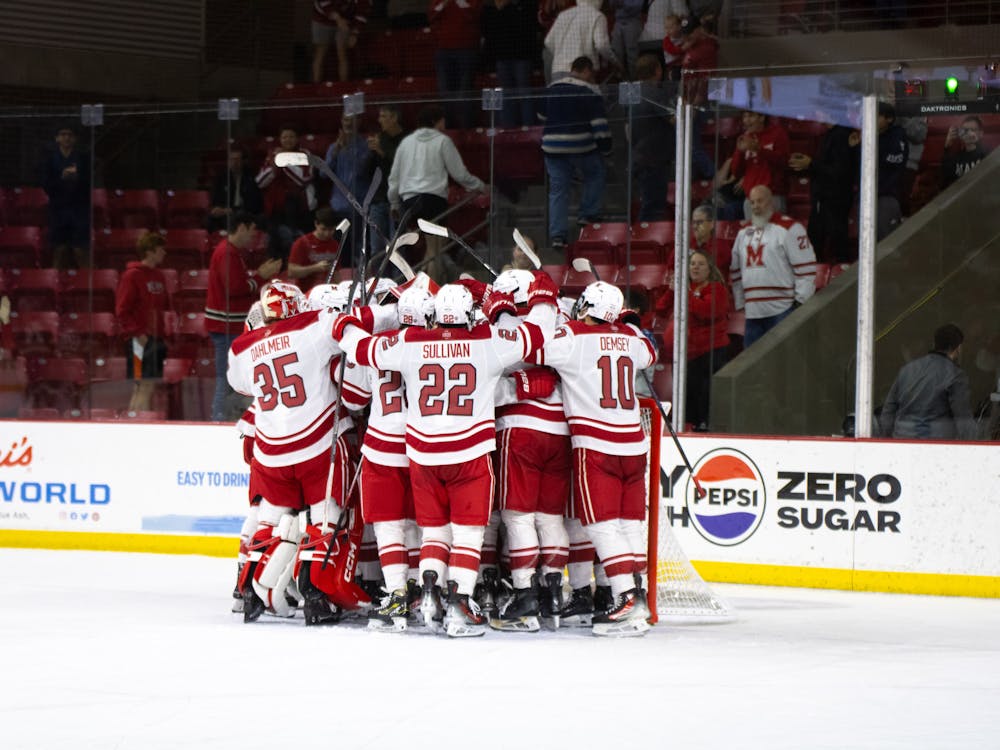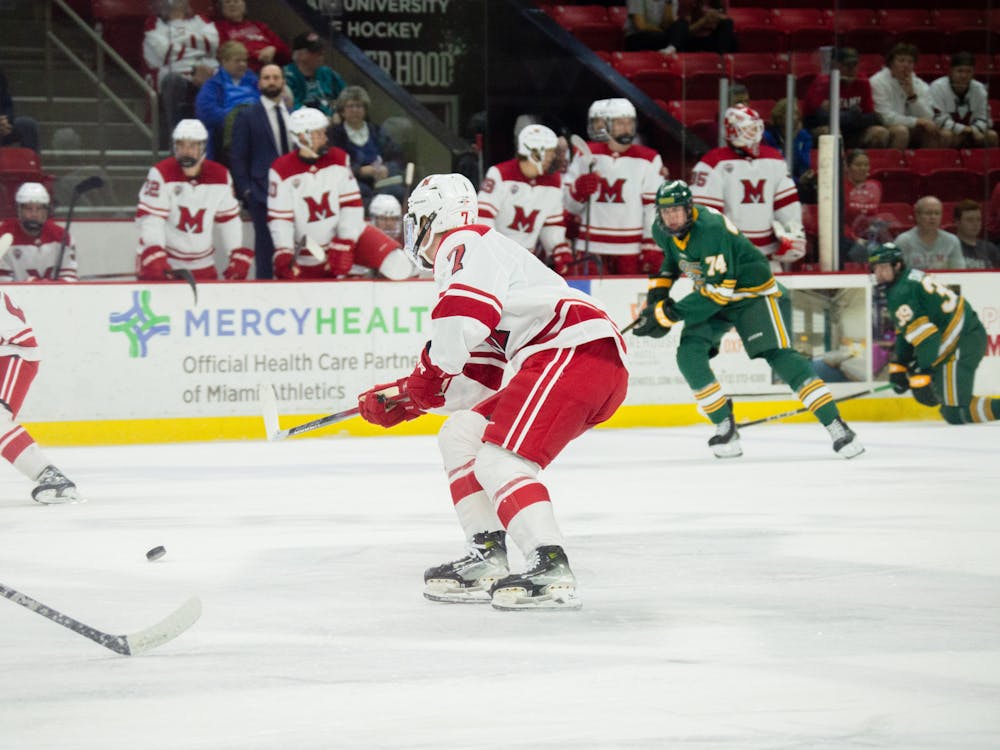Ten years ago, the Miami University RedHawks grew up playing as their favorite college football players. Now, they will be the ones taking the big screen.
Electronic Arts (EA) Sports released the first college football video game since NCAA Football 14 came out in 2014. EA Sports College Football 25 released on July 19, and it would not have been possible without the Name, Image and Likeness (NIL) policies that have already altered the landscape of college athletics.
The game has already seen incredible success, selling over two million pre-orders before its official release. EA claims that 2.2 million unique players played the game between July 16-18.
The game includes 134 FBS teams with well over 10,ooo athletes who have already opted-in to be featured. Those who opted-in received $600 and their own personal copy of the game, which is valued at around $70.
Among those 10,000 are an overwhelming majority of the RedHawk’s roster. Many RedHawks have waited a long time for this game. Junior linebacker Corban Hondru has a long history with the game and quickly jumped on the opportunity to be featured.
“I’ve loved every kind of video game since I was a kid,” Hondru said. “I was really into it [EA Sports NCAA Football], and I was sad it got taken away, but I’m super excited about the new college game.”
The original NCAA College Football game series was discontinued 11 years ago. Ed O’Bannon, a former UCLA Bruin and Brooklyn Nets player filed a lawsuit against EA Sports and Collegiate Licensing Company (CLC) for using athletes’ image and likeness in the games without proper compensation. A $40 million settlement was reached, and shortly after EA ceased any further production.
Hondru also described speculation about the game dating back to almost a year ago, but it was not until March 2024 when it became a reality. The team had caught wind of the situation after a leak on X. Shortly after, contracts were proposed to the players.
Alex Reid, the assistant athletic director of compliance, has worked at Miami since 2021, the same year that NIL policies were introduced to college athletics. Reid’s position within the athletic department permits him to introduce NIL opportunities to student athletes without any other involvement in contracts or specifics.
“I was able to at least let our student athletes know like, ‘Hey, you can go opt into this deal,’” Reid said. “But once they opt in, it's their deal. [Miami] is not involved in any capacity beyond that.”
For this deal in particular, Reid was approached by OneTeam Partners, whom EA Sports has worked with on this project to help facilitate NIL logistics. On their behalf, Reid emailed players sign-up instructions to those who were interested in opting-in.
The game offers 85 roster spots per team to be featured in the game, with the likely chance of walk-on athletes being excluded. First-years and transfers who were not included in the initial launch can be added on later with updates in the game.
Enjoy what you're reading?
Signup for our newsletter
Senior walk-on quarterback Orin Edwards is one player not guaranteed a spot in the game.
“The video game sounds like an amazing opportunity for all athletes involved,” Edwards said. “Although I wish every athlete was included, I am eager to try out the new game.”
The new College Football 2025 offers a variety of different game modes for players to use. Dynasty Mode allows gamers to build a team from scratch as a head coach, incorporating features such as recruiting and the transfer portal. Gamers can also jump into Road to Glory to play as an individual athlete enroute to winning the Heisman Trophy.
Ultimate Team compiles players from past and present to make a dream team of your choosing to compete against others online. Finally, Road to the College Football Playoff connects players online to compete against each other to take home the national championship.
While there are still familiar aspects of the old game, there are many exciting alterations, giving the game a more modern feel. EA Sports has worked on creating an individualized experience for its players.
Stadiums and mascots mirror real college atmospheres with closely captured details of pre-game rituals, celebration dances and real game-day audio, giving the game a school-specific and unique environment. The Stadium Pulse Meter is another new addition that emulates the effects of an intense crowd on game outcomes.
The Player Abilities feature differentiates each player by their skill levels and experience, adding value to certain rosters. Players also have a Wear and Tear feature that forces gamers to take into account the health of their players before putting them into the game, which helps encourage diverse lineups and play variation.
Senior linebacker Jackson Kuwatch has played his fair share of the game so far. He’s used every mode the game has to offer since the release, with his team of choice being his current school.
“I think dynasty is the coolest mode honestly,” Kuwatch said. “One thing I’ve noticed is that the games tend to be more high scoring than in real life. It’s much harder to play defense in the game than it is offense, but overall playing the new game is a lot of fun.”




